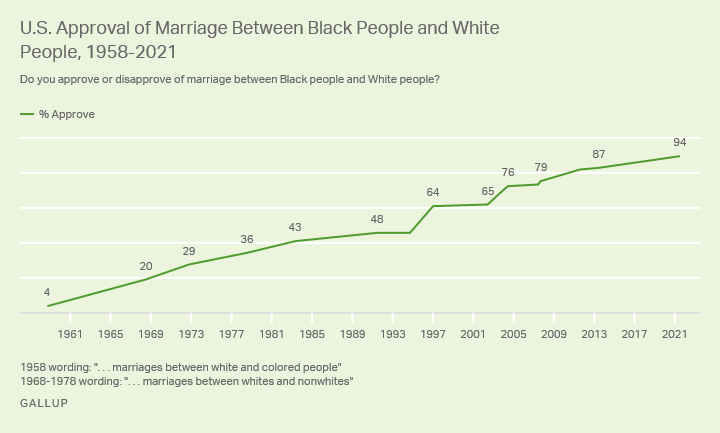"Kamala is for they/them, Trump is for you"
Transgender Americans are here to stay; Democrats must learn to fight better, not walk away.
In the 2024 election, Donald Trump’s campaign zeroed in on transgender rights with an intensity that felt both bewildering and, somehow, familiar. The strategy was clear: frame trans inclusion as a menacing and extreme agenda and brand Democrats, particularly Kamala Harris, as representatives of a fringe, identity-obsessed politics.
Figures like Ted Cruz, who proudly declare their pronouns as “Patriot” and “Kiss My Ass,” turned mockery into political theater, wielding it as a weapon in a broader culture war. These jabs, masking deeper anxieties with performative outrage, reveal the right’s strategy for tapping into—and profiting from—discomfort with the changing landscape of gender and identity.
Senator John Fetterman suggested that Republicans’ ads attacking transgender rights in swing states helped Trump and Republicans to victory. He acknowledged that while he supports trans communities, the relentless messaging, like the "she's for they/them, Trump is for you" tagline, had a strong "earworm quality" that resonated with voters.
But the prominence of trans rights in Republican attack ads isn’t fueled by any advocacy group or leftist politician—it’s a reaction to the broader cultural shift in how we understand gender. Transgender Americans are here to stay; Democrats must learn to fight better, not walk away.
Between August and October, Republicans spent over $65 million on television ads across more than a dozen states, targeting some of the most competitive races in the country, according to the New York Times. Blueprint’s findings reveal that swing voters were deterred by Harris's perceived focus on cultural issues like transgender rights, ranking it the third most important reason after inflation and immigration concerns.
This playbook isn’t new. Trump’s targeting of trans rights mirrors George W. Bush's 2004 strategy against gay marriage, which painted John Kerry as a threat to "traditional values."
By portraying the mere existence of trans people—and the pronouns and identities they claim—as an assault on an idyllic past, the right exploits an anxiety over the loss of a “simpler” America, where gender was understood in binary terms and family structures were predictable and familiar. For many, this is about far more than policy; it’s about finding a scapegoat for societal changes that feel overwhelming.
Over the past few decades, the LGBTQ+ movement has achieved staggering progress, transforming what once seemed like a distant goal of acceptance into a new social reality. But the rapid pace of this change—especially around trans rights in recent years—has left many feeling unmoored. The movement’s early victories hinged on a strategic argument of “choicelessness,” an approach that effectively framed LGBTQ+ identities as innate, helping to erase homosexuality as a pathology and secure landmark civil rights wins, like marriage equality and military inclusion. Yet, as Masha Gessen notes, this strategy may have also backed us into a corner—the “immutability trap”—where identity is presented as fixed and unchanging. Now, as the conversation shifts to trans rights, this strategy struggles to adapt, pushing society to rethink basic concepts of family, gender, and community in ways that can feel disorienting.
Leading this charge is conservative strategists like Christopher Rufo, known for crafting the “moral panic” around teaching Darwin’s evolution Critical Race Theory (CRT) in schools. With CRT, Rufo capitalized on parental fears about unfamiliar school curricula. With trans rights, he’s tapping into another emotional fault line: anxiety over shifting gender norms, education policies, and even language itself. By positioning trans Americans as symbols of this cultural shift, Rufo and the right transform a marginalized group into an existential threat. The result is a cycle of fear and division, shifting the focus from majoritarian pressing issues—such as healthcare, education, and economic stability—toward an “all-consuming crisis” that distracts and divides.
But why this particular fixation on trans rights? For conservatives, it’s the perfect wedge issue. Trans rights are complex, disruptive to the traditional gender binary, and often misunderstood. Anat Shenker-Osorio calls this “siloing”—taking an issue and painting it as a niche concern, something alien that ought to be feared, rather than understood as part of the broader human experience. Much as the marriage equality movement reframed gay rights in terms of love and family, trans rights can be reimagined to reflect universal values: autonomy, freedom, and self-expression. Yet, without such framing, anti-trans rhetoric is filling the void, embedding fears rather than empathy into public opinion.
When you let the opposition frame an issue as belonging to a small, isolated group, you risk being ignored or dismissed. When you let the opposition frame an issue as belonging to a small, isolated group, you risk being ignored or dismissed. Trans rights, however, have been siloed by the right, intentionally separating them to create fear and alienation—because scapegoating only works when people see others as separate, rather than as part of a shared human experience.
Unlike during the era of the fight for marriage equality, where groups like HRC aired TV ads defending LGBTQ+ rights, we see almost no major ads from Democrats or advocacy groups today defending trans Americans from the range of discrimination they face. In 2004, HRC aired ads countering President Bush’s push to ban same-sex marriage, focusing on equality and anti-discrimination. Later, they ran ads supporting the repeal of Don’t Ask, Don’t Tell, emphasizing the sacrifices of LGBTQ+ service members.
This gap in public messaging leaves trans rights vulnerable to right-wing attacks, especially during election cycles where these issues are weaponized to stoke fear and division. Without a visible defense of trans rights in mainstream media, Democrats risk ceding the narrative entirely to conservative messaging.
In fact, anti-trans laws across the country, particularly those limiting healthcare access, signal a profound discomfort with the speed of change. There’s a palpable desire among some Americans to revert to a mythical past, a time before pronouns and fluid identities entered the mainstream. But that vision is a mirage, an imagined safe haven that ignores the realities facing transgender people today—employment discrimination, healthcare barriers, homelessness, and safety from harassment and violence. This nostalgia for a “simpler time” ignores the complexities and struggles of real human lives in favor of a narrative that feels familiar, if not entirely true.
The LGBTQ movement’s struggle for marriage equality holds lessons for today’s transgender rights advocates. The marriage equality movement made its case through shared values like love, family, and commitment, helping many Americans see the issue as a natural extension of widely held beliefs. But trans rights demand something deeper—a rethinking of identity itself. While marriage equality asked the public to accept love between two people of the same sex, trans rights challenge us to broaden our understanding of what it means to be a man or woman, or neither.
For a society that’s long held these categories as sacred and unchanging, this can be unsettling. Even liberal individuals can find themselves struggling to grasp ideas like nonbinary identities or gender fluidity, leading to a backlash that’s often based more on generational misunderstanding than outright bigotry.
The risk for Democrats, then, is to fall into the messaging trap of framing trans people as objects of controversy rather than subjects of empathy. This approach often alienates the public, when in fact trans issues could resonate with the broader American experience. “We all know what it’s like to feel pressure to fit into gendered expectations,” Shenker-Osorio points out, noting how people of all backgrounds can recall times they felt constrained by gender roles. This shared experience provides an opening to reframe trans rights not as an outsider issue but as an integral part of a struggle for self-expression and self-determination.
To counter conservative tactics effectively, Democrats can’t afford to sidestep the issue. “In all the polls, the trans stuff is bleak," said a Democratic strategist to NBC News, calling a Trump ad on the topic "a killer." Trans activist and Democratic strategist Charlotte Clymer noted that Harris was more focused on issues like supporting working-class families, restoring Roe, and strengthening the economy, with no sign that transgender issues are on her campaign's radar.
But Democrats and advocacy groups must be courageous enough to persuade the public on trans rights. Sidestepping these tough conversations only hands the narrative to right-wing attacks and misinformation. When right-wing voices are the sole political machinery engaging Americans on questions of transgender rights and pronouns, it’s no wonder their perspective dominates.
As Shenker-Osorio advises, Democrats must avoid the “protection trap”—the framing that casts trans people as victims needing rescue. Instead, they should promote a message of autonomy and self-authorship, values that resonate across the political spectrum.
Wishing that trans issues would disappear, as some centrists might hope, isn’t a strategy. Transgender Americans are here to stay. The question is not whether their rights are necessary but how to help the public understand them in a way that goes beyond right-wing caricatures. Democrats and advocacy groups must step up, actively engaging with Americans' questions and doubts, recognizing that, for many, concepts like “they/them” pronouns or gender nonconformity can be unfamiliar. Democrats would also do well to call out these tactics for what they are, exposing the culture wars as, in “hate-for-profit”—a cynical strategy designed to deepen divisions and deflect from material issues.
But rather than simply mocking or dismissing these questions, Democrats need to approach them thoughtfully and compassionately, creating space for broader understanding and reframing trans rights as values deeply aligned with American principles of freedom and self-determination.
In his first major promise after winning the election, Trump pledged to prioritize a sweeping set of anti-trans policies, casting them as measures to “protect America’s youth.” He said he would “ask Congress to pass a bill establishing that the only genders recognized by the U.S. government are male and female, and they are assigned at birth.” His proposed actions include banning gender-affirming care at the federal level, investigating pharmaceutical companies, and enforcing restrictions on teachers discussing gender identity with students. (Meanwhile, even Pakistan's Supreme Court ruled in 2009 that transgender people could obtain national identity cards under a "third sex" category. The government took a further step by issuing passports with a transgender category.)
If Democrats and advocates can shift trans rights out of defensive silos and into the mainstream conversation, they stand to make a powerful case for inclusion. The future of American identity is at stake, and Democrats have a choice: to define it by inclusion and empathy or leave it to those who profit from division.





